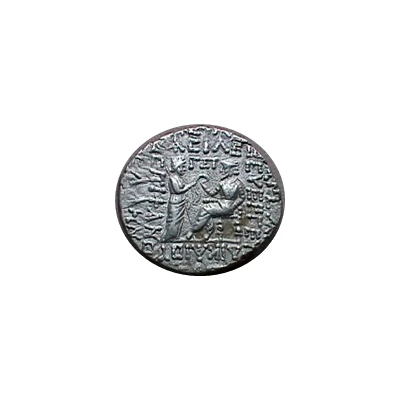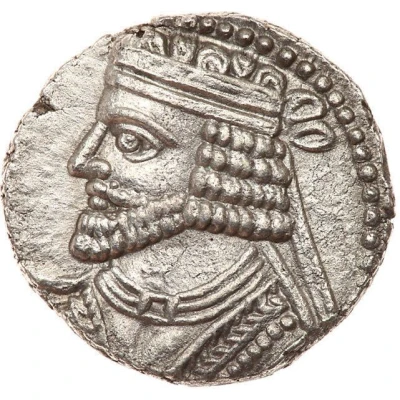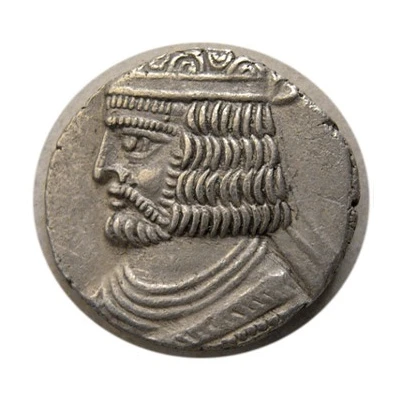


Tetradrachm - Vologases I Seleucia
| Silver | 14.19 g | 26 mm |
| Issuer | Parthian Empire (Parthian Empire (247 BC - 224 AD)) |
|---|---|
| King | Vologases I (51-78) |
| Type | Standard circulation coin |
| Years | 51-78 |
| Value | Tetradrachm (4) |
| Currency | Drachm (247 BC-224 AD) |
| Composition | Silver |
| Weight | 14.19 g |
| Diameter | 26 mm |
| Shape | Round (irregular) |
| Technique | Hammered |
| Orientation | Variable alignment ↺ |
| Demonetized | Yes |
| Updated | 2024-10-10 |
| Numista | N#90410 |
|---|---|
| Rarity index | 100% |
Reverse
King seated left on throne receiving diadem from Tyche with scepter; Greek inscription.
Script: Greek
Lettering:
[ΒΑΣΙΛΕΩΣ] ΒΑΣΙΛΕΩ[Ν ΑΡΣΑΚΟΥ] ΕΥΕΡΓΕ[ΤΟΥ] ΔΙΚΑΙΟΥ ΕΠΙΦΑΝΟ[ΥΣ ΦΙΛΕ]ΛΛΗΝ[ΟΣ]
ΓΞΤ
Comment
BMC Greek (Parthia) 3, p.179
Interesting fact
One interesting fact about the Tetradrachm - Vologases I (Seleucia) 51-78 coin from the Parthian Empire is that it features a unique blend of Greek and Persian influences in its design. The coin's obverse side features a portrait of Vologases I, while the reverse side depicts a seated goddess, likely Artemis, with a crescent moon and a star above her head. This fusion of Greek and Persian elements reflects the cultural exchange and syncretism that occurred during the Parthian Empire's reign.



